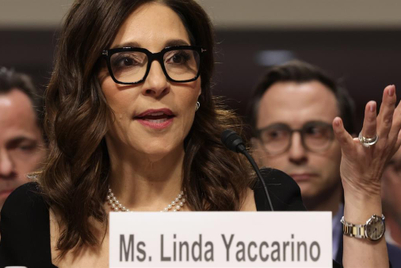
When FIFA declared the 2022 World Cup "carbon-neutral," it triggered more than applause—it sparked a backlash. While the global body released a detailed sustainability strategy, climate watchdogs weren’t convinced. A 2022 report from Carbon Market Watch claimed FIFA significantly underreported emissions, and in 2023, the Swiss Fairness Commission ruled that the carbon-neutral claim was misleading.
Meanwhile, Ikea—often lauded for its early green moves like eliminating single-use plastics in 2020—faced its own reckoning. In 2021, Earthsight accused the brand of selling illegally sourced Russian wood, despite it being FSC-certified. Ikea cut ties with the implicated suppliers, but questions about certification credibility linger.
When every brand claims to be ‘green’, how do consumers separate sincerity from spin? That question lies at the heart of a new research paper co-authored by faculty at IIM Lucknow and global academic partners.
The study reveals that greenwashing does more than mislead—it corrodes consumer trust and undermines genuine efforts toward sustainable shopping. As climate-consciousness grows, so too does scepticism. Consumers with stronger environmental knowledge are quicker to spot false eco-claims, and far less forgiving.
"Greenwashing is dangerous for brands, but consumers appreciate green claims. A business’ green claims should be substantiated by evidence that can be verified by consumers," said Dr. Sushant Kumar, assistant professor of marketing at IIM Lucknow. His team’s research underscores a clear takeaway: sustainability messaging without authenticity is a reputational liability.
And yet, greenwashing persists. Why?
Apurva Kothari, founder of sustainable clothing brand, No Nasties offers a blunt explanation. "Brands and agency partners know that they’re losing market share to consumers who are demanding sustainability and transparency, but they don’t want to spend the time or the money to research, invest and produce truly sustainable solutions. It’s easier and cheaper to sell a fake story than do the honest work."

For Arpit Jain, director at Arkade Developers, the pressure stems from the ESG scoreboard. "Most still resort to greenwashing because they are under pressure to achieve ESG expectations in haste, particularly from investors or customers. It’s a marketing quick fix." But in sectors like real estate, where purchase decisions are long-term and consumers well-informed, "these strategies fail. It’s not worth the reputational hit."
Over the past ten years, climate change and its consequences have moved from the margins to the mainstream, prompting widespread dialogue around sustainability and long-term resilience. In response, businesses across sectors have begun to shift gears—some by investing in eco-friendly products, others by building sustainable infrastructure.
However, while a few brands may jump on the green bandwagon for short-term visibility, meaningful engagement in this space requires more than surface-level gestures. Sustainability is not a monologue—it’s a conversation that demands authenticity, accountability, and ongoing participation.
Ruhie Pande, group chief human resources and chief marketing officer, Sterlite Electric, Resonia Ltd, and Serentica Renewables, takes a structural view. "The very nature of these narratives demands a dialogue, not one-way messaging. Integrating sustainability within both business purpose and processes together with authentic storytelling is critical to sustainability messaging," she notes.

That means ESG cannot remain a tick-box exercise. This requires ESG frameworks to be set up, capacity to be built, goals to be quantified and progress to be measured.
Meanwhile, Ruppal Walia Sharma, Professor of Marketing and Head, Delhi Centre at the SP Jain Institute of Management and Research (SPJIMR), believes greenwashing is often a symptom of misplaced priorities. "Incorporating green benefits in brand communication is seen as a low-hanging fruit. Without changes in the business model, especially in product design, sourcing and resource management, such claims are often mere lip service."
Voicing it right
So how can brands credibly communicate their sustainability intent? For Pande, it starts with aligning actions with values. "We have integrated Quality, Health, Sustainability and Environment indicators in our processes to ensure our operations are efficient, safe, and sustainable as well as certified externally."
Jain echoes this approach. Arkade has excluded ambiguous terms in its marketing campaigns and instead deals in facts—like energy-efficient fixtures or verified green building certifications. “Where it’s a work-in-progress, we mention that. Buyers are intelligent; if you’re truthful, they have more confidence in you," he noted.
Building trust and credibility also involves walking the talk with brand actions and practices that can shape consumer attitudes. Anyone who thinks otherwise can look back to Apple’s claims on green initiatives, which drew a lot of flak due to its practices around planned product obsolescence, lack of repairability, resource intensive materials choices, etc.
Kothari, therefore, advocates radical transparency. "All claims need to be backed by proof. We share our impact calculations and even our investment numbers for every sustainability claim we make," he emphasised.
Data matters, but so does design. Walia points to a study from SPJIMR that emphasised the importance of clear, trustworthy eco-labels. "Green scepticism can be mitigated by better clarity of information on eco-labels. Consistent action is the best way to build trust and credibility."
But trust, once broken, isn’t easily repaired. Divye Agarwal, founder of social media growth company Binge Labs, helps brands navigate that trust gap through story. "If you can’t prove it, don’t say it. But the goal is not just accuracy—it’s about turning honest progress into meaningful content." That includes founder pivot stories and behind-the-scenes transparency. "People are not looking for perfect brands. They are looking for honest ones," Agarwal added.
Green shoots of trust
According to the IIM Lucknow study, greenwashing not only damages brand credibility, it casts doubt over the entire sustainability narrative. When one brand overreaches, all others pay the price. So how can confidence in green claims be restored?
"There is no sustainability messaging without sustainability in action," said Pande. This is also why relies on externally certified benchmarks and discloses measurable progress in its reporting.
Jain insists on consistency. "Sustainability isn’t a project with a deadline; it’s a continuous process. Brands that demonstrate steady consistency through time will build trust."
The focus should also be on delivering measurable results that reflect actual commitments, not just intentions. Transparent, specific messaging builds greater consumer confidence than ambiguous or inflated claims.
What really helps build their case are third-party certifications from credible industry or government bodies. These can further validate sustainability efforts, helping consumers distinguish between authentic action and superficial greenwashing.
Walia suggests regulatory intervention, "Clear guidelines need to be laid down on the conditions brands need to fulfil to make green claims. Eco-labels can also be standardised."
For Agarwal, trust comes from embracing the journey—failures and all. "We encourage clients to talk about what didn’t work and what they learned. If you’re just getting started, share your intent. Audiences are much more likely to support a brand that is trying transparently."
Behind every well-crafted sustainability narrative lies a more important question: Who is checking the facts?

Jain outlined a robust internal system: "We require audits, third-party verification, and transparent documentation of all the steps we take. With agencies, we ensure they don't exaggerate anything—give them precise inputs and proof points."
Kothari flagged internal alignment: "I’m seeing the need for more internal communications between Product and Marketing teams. It’s easy to over-simplify sustainability on social media. An SOP is required to validate each claim made externally."
The narrative matters
To maintain factual rigour while still telling emotionally compelling stories, Jain offers a pragmatic take of sticking to practical examples instead of big promises. “If a homebuyer feels the benefit directly—lower bills, better air—they don’t need emotional hype," he pointed out.
Kothari admits that this is green messaging is an uphill battle. The solution is to build long-term trust with behind-the-scene stories and transparent efforts. And he confident that with these steps, its consumer community will trust No Nasties beyond words.
Agarwal sums it up best: "Too often, green messaging sounds like it was written by a legal team. It feels cautious, filled with jargon. We help brands bring sustainability to life through storytelling that feels grounded, personal, and true. If it doesn’t feel real, it won’t resonate," he noted.
As sustainability moves from a buzzword to a baseline expectation, the risk of greenwashing is no longer limited to consumer backlash—it is a strategic liability. For brand custodians, that means shifting from impression management to impact measurement.
Because in a world where every brand claims to be green, only those who can prove it will be trusted. And in the court of public opinion, it’s not your label that counts—it’s your receipts.


.jpg&h=334&w=500&q=100&v=20250320&c=1)











.jpg&h=268&w=401&q=100&v=20250320&c=1)

.jpg&h=268&w=401&q=100&v=20250320&c=1)

.jpg&h=268&w=401&q=100&v=20250320&c=1)

